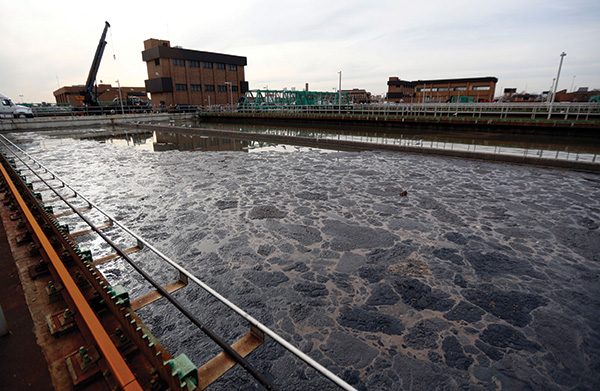
When Hurricane Sandy made landfall on October 29, the extreme conditions again put New Jersey’s infrastructure and utilities to the test. While attention focused on power outages and loss of communications, the threat to our water supply was just as important.
To understand the impact of superstorms on our water supply, I turned to Bob Iacullo, executive vice president of United Water, a company that provides water and wastewater services to 1.6 million people in the Garden State (and close to 8 million nationwide).
How did Sandy affect our drinking water?
United Water, as well as the other major water utilities in New Jersey, did a great job during this event. When you look at how many residents may have been without water, it was very minimal. We had 200 residents out of the 1.6 million residents that we serve in the state with some interruption of service for a very short period of time. [Among other service providers, New Jersey American Water reported some pressure-related problems, and Middlesex Water Company issued a boil-water advisory to its customers because of loss of system pressure.]
Did you have any specific problems at the Shore?
We had significant concerns in Manalapan, where we were running our system on [generators] and asked the governor to strongly urge conservation in his daily messaging….In Toms River, we actually lost our headquarters to the storm surge and had to find a makeshift office to set up our operations to deal with the aftermath of the hurricane. We are still without a headquarters building in Toms River.
What preparations did United Water make as Hurricane Sandy approached?
The day before the storm even hit, one of our largest facilities got off the power grid. We went up to standby generation so we wouldn’t have a blip in energy when the storm occurred….But what that meant, obviously, is that you need fuel to run those generators. Did we anticipate that the storm was going to last or be as powerful as it was, [or] knock out power for as long as it did? Maybe not. So one of the critical points of concern that we did have was the availability of diesel fuel for our generators.
There were reports of pollution issues, such as raw sewage and sediment being churned up and swept into our waterways. Was this an issue?
Our water facilities were able to treat for any additional pollutants that may have been in the supplies. That didn’t affect us. If untreated sewage is introduced into the waterways that are a source of supply, our facilities…adjust their chemistries to ensure that they’re getting effective treatment of the water supply.
What are the economic and environmental impacts of raw or partially treated sewage on our nation’s waterways?
The long-term impacts from [Hurricane Sandy] are expected to be negligible. However, the discharge of raw sewage impacts water quality and remains a serious problem nationwide. The EPA estimates that nearly 900 billion gallons of raw or partially treated sewage discharges into the nation’s waterways each year from aging, failing and overburdened sewer systems. Untreated wastewater can pose significant risks to the environment, downstream users and local economies, depending upon the circumstances.
Was that the case in northern New Jersey on the Passaic?
Unfortunately, yes. The Passaic Valley Sewerage Commission, which operates the nation’s fifth largest sewage treatment plant, released hundreds of millions of gallons of raw or partially treated sewage into Newark Bay while it tried to restore the facility to full treatment capacity [after Sandy]. State officials issued warnings to people a week or so after the storm to avoid contact with the water or fish until the problem has been corrected. Thankfully, recreational uses in the late fall are minimal because of the colder weather.
What should we learn from Sandy?
We certainly need to look at this storm as a wake-up call to invest strategically in our infrastructure to protect our environment from these disastrous weather events.
